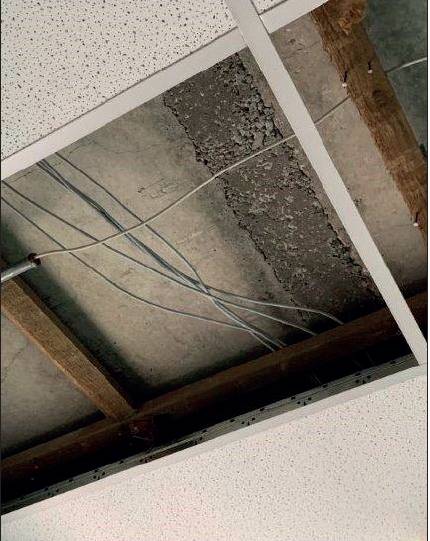Letters to the editor and comments online
Your View
Materials
Clarification about limestone filler cements needed
In the letter “Limestone filler warning for Hexham Flood Defence” (NCE, September) I need to correct inaccuracies about the performance of concrete containing limestone filler cements in sulphate conditions. The assertion that limestone filler cements should not be used in concrete exposed to sulphates is incorrect and does not consider current guidance for specification of concrete to resist sulphate attack.
It is correct that for thaumasite sulphate attack (TSA) to occur, there must be low temperature (below 15°C) and available carbonate ions. This form of attack results in a progressive weakening and expansion of the cement paste from the surface of the concrete inwards, resulting in a loss of cover to the reinforcement.
The Thaumasite Expert Group was convened in 1998 to consider the implications of TSA. From the group’s report, guidance was published as BRE Special Digest 1: Concrete in aggressive ground, 2001, which replaced BRE Digest 363.
This first guidance introduced the concept of aggregate carbonate range where, for some design chemical classes, the limiting values of minimum cement content and maximum free water/cement ratio became more onerous with increasing aggregate carbonate content.
A full revision of BRE Special Digest 1 was published in 2005. It made two changes to the specification of concrete exposed to sulphate conditions. The first was that cements were placed in a greater number of groupings for resistance to sulphate attack to better reflect their relative performance. The second was that with increased understanding that carbonate ions may be available as bicarbonate in groundwater, so TSA could occur in concrete with a low aggregate carbonate range; concrete required suitable limiting values to resist attack irrespective of whether the source of carbonate was internal or external. The aggregate carbonate range was therefore removed from the third edition of the digest.
Cements containing limestone fines conform to BS 197-1:2011 [4] and the range available for specification was expanded to CEM II/C-M and CEM VI with the publication of BS EN 197-5:2021 [5].
For the revision to BS 8500:2023 to include these lower carbon cements, concretes containing ternary combinations of CEM I ground granulated blast furnace slag and limestone fines and CEM I fly ash and limestone fines were assessed alongside concretes containing CEM I, CEM III/A and CEM II/B-V.
They were assessed by BRE in artificial solutions of: sodium sulphate (1.5% SO4 by mass) at 20°C; magnesium sulphate (1.5% SO4 by mass) at 20°C; class 5 sulphate (MgSO4.7H2O: 11.148g/litre and Na2SO4: 6.9611g/litre) at 5°C.
The BSI technical and drafting working group for BS 8500 (B/517/1/WG 20) was then able to assess the relative performance of these new cements in aggressive sulphate conditions and classify them within the current BRE Special Digest 1 groups.
The latest guidance for the specification of concrete allows the use of limestone cements in concrete designed to resist sulphates and this correction is to ensure that readers have the latest best practice guidance for specification.
Gareth Wake, director, MPA Ready-Mixed Concrete gareth.wake@mineralproducts.org
MATERIALS
Debate about Raac safety assessment continues
I empathise with the sentiment in Peter Ford Mason’s letter (Your view, last month). What a mess the reinforced autoclaved aerated concrete (Raac) issue has turned into. Ford Mason highlights the key issues: Risk and responsibility – the risk is intolerable, no question there; something should have been done sooner, no question there; engineers must take some responsibility, that is where questions arise.
 Raac: Who checked design life?
Raac: Who checked design life?
I think the law, the Health & Safety at Work Act in particular, would see the building owners and operators as the duty holders responsible for maintaining their property in a safe and suitable condition. Next question: why did they not do this, especially when it was clear the design life of these components was less than the overall design life of the building?
One reason may be that their integrity management system had failed to sufficiently inspect and assess the adequacy of their buildings. Another may be that their integrity management system identified the issue but recommendations for repair or replacement were not acted on. I suspect each case will have its causes. Ford Mason finishes by saying engineering institutions must act immediately.
I suggest lobbying the new Building Safety Regulator to investigate.
David J Costello (M) djcostello@hotmail.com
MATERIALS
Raac responsibility
Peter Ford Mason should acquaint himself with the facts (Your View, last month). These schools were bog standard, single story lightweight steel frames comprising mainly cold-rolled lattice beams on USB stanchions, all founded on a concrete ground slab.
The roof had lightweight Raac roof units and the roof finish was felt; asphalt if you were lucky.
Walls took some form of external curtain walling and interiors were un-plastered concrete block.
They were designed by architects assisted by cost consultants, known as quantity surveyors at that time – hence the 30 year life span – while at the same time politicians could crow about the number constructed.
Mike Speakman (F) mikespeakman@hotmail.co.uk
MATERIALS
Who said Raac elements only had a 30-year design life?
I challenge anyone to produce evidence published during the 1960s, 1970s and 1980s that Raac structural elements were credited with only a 30-year serviceable life.
During this period l was designing them into many buildings using safe load-span/deflection tables produced by manufacturers of the elements. If there had then been any concerns that they would have a serviceability of only 30 years, they would not have been used.
At that time the common waterproofing for flat roofs was hot-applied asphalt, which does have a life of about 30 years and l wonder if this is where the current retrospective supposed time limit originates?
Brian Hughes (F) brian1241hughes@gmail.com